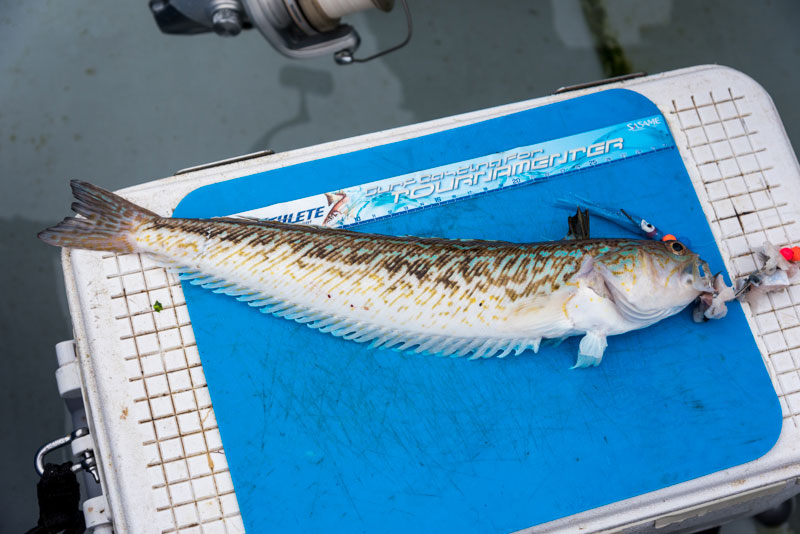Trachinus draco

Distinguishing features
The greater weever has a fairly slender body and the smaller ones are not dissimilar to a whiting. It has a smallish head with a comparatively large almost vertical mouth. Two poisonous spines (one one each side) are situated at the rear edge of the gills, pointing downward. In addition there are two other poisonous spines on the prominent frontal dorsal fin. The general colouration is a sandy brown and white to cream with darkish mottled stripes and on occasion the sides and fins can be tinged with blue. The anterior dorsal is very dark.
Size
The maximum size for the greater weever is around 40cm.

Photo courtesy of David Groom
British Record Fish List
UK Shore Record:
UK Boat Record:
Habitat
The greater weever can to be found around the Atlantic coast of Europe and throughout the Mediterranean waters. It is commonly found over sandy seabeds from around 10 metres to depths of 100 metres. It buries most of its body in the sand during the day and mostly emerges to feed after dark when it may be pelagic.
Food
The weever feeds heavily on small crustaceans and fish including sandeels and gobies.
Bait
Small fish baits will attract the weever wrasse although they are normally taken when targeting other species.
